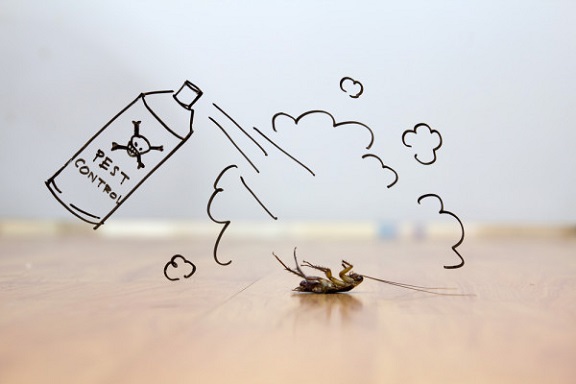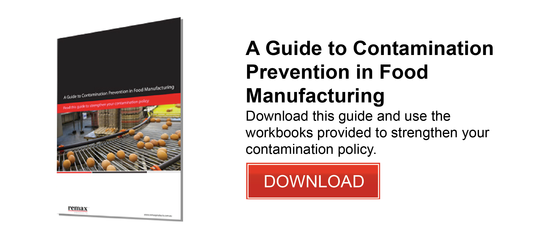How to prevent flying insects from entering your warehouse
Preventive pest control methods to consider
Flying insects are a pervasive cause of contamination throughout the food manufacturing, processing and distribution industry and as we enter the summer months they become even more of an issue.
Their number and size make them hard to control and trap. Left unchecked, insects often move freely between food products and garbage, increasing the chances of spreading illness and disease.

In Australia the main flying insect pests are flies, particularly houseflies, blowflies and fermentation flies. Each of them have different feeding and breeding habits.
Yet there are preventative measures, that when properly deployed, will prevent all three types along with all other flying insects pests including moths, mosquitoes, wasps, bees, winged ants and termites. Here's what to think about.
Key flying insect hazards for food businesses to consider
- Flying insects are highly mobile, which means you need to consider all points of entry across your entire facility.
- Flying insects feed indiscriminately on waste, excrement and food products, spreading bacteria between different food sources.
- They are also carriers of other unsanitary organisms that are potentially harmful to humans. Depositing these organisms in your produce causes increased spoilage, as well as increasing the risk of transmitting disease.
- They may also embed themselves in food increasing spoilage of your food stuffs.
- Finally food regulations dictate there must be no flying insects present in food premises. This means that all the above hazards are regulated heavily across Australia requiring you to actively control pests.
In implementing any pest control program, it's important to consider preventative measures first and foremost. Strong preventative measures will reduce the need for major elimination procedures.
With this in mind we will examine some of the major prevention strategies for flying insect pests.
Structural prevention to reduce flying insect contamination
Widow & door screening
- Reason: Windows, doors and ventilation points are key areas for flying insect ingress.
- Action: Install tight fitting, intact insect screens on all points of entry that are well maintained
Door opening & closure
 Reason: Open doors are obviously a major invitation to flying insects and thus open time needs to be kept to the absolute minimum.
Reason: Open doors are obviously a major invitation to flying insects and thus open time needs to be kept to the absolute minimum. - Action: Wherever possible install and fit automated rapid roller door systems that close and open with high speed and are robust enough to take impacts and keep on working. The less time the door is open the less time for flying insects to enter.
Strip doors
 Reason: When there is an entry or exit that must remain open and air curtains are unjustified because of cost or size, strip doors can provide an adequate barrier to deter most flying insects from entry.
Reason: When there is an entry or exit that must remain open and air curtains are unjustified because of cost or size, strip doors can provide an adequate barrier to deter most flying insects from entry. - Action: With any unprotected exit or entry install strip curtains and make sure that the strips provide a continuous visual barrier when they are hanging undisturbed.
Door and window seals
- Reason: Anywhere there is a faulty seal there is a point at which flying insects may find a way into your facility.
- Action: Ensure that every window, door and ventilation unit is securely sealed and have no gaps around the edges. Also check to make sure all the seals are good condition and will not perish in the near future.
Air conditioning temperature, efficiency and positive pressure
- Reason: It has been shown that when the above conditions are met, any environment that is cool, low in odour and comfortable to humans, that conditions are unattractive to flying insects.
- Action: Make sure that air conditioning and ventilation systems are well maintained and providing a constant cool, low odour environment. A good sign of a well-conditioned environment is one with a slight outward flow of air when any door is partly opened.
Those are structural measures that every business should consider when building or checking their facility for pest prevention effectiveness.
Further measures for flying insect prevention
Below is a shortlist of further measures that should be in practice around your workplace.
-
Location of flowering plants: They should be at least 10 metres away from any entrance or exit.
-
Exterior cleanliness: All external objects of furniture, pathways, garbage bins and surrounds should be kept clean and clear.
-
Odour management: Make sure to regularly clean exhaust outlets and filters to rid your area of food odour.
-
Waste management: Always keep trash sealed in bags and skip bins and make sure it is cleared regularly before it overflows. Also all leftover liquids from beverage containers and other products should be minimised.
-
External lighting: Bright lights attract flies and moths. Try to have the lighting facing the building.
Get more info about preventing flying insect infestation
These preventative measures are a crucial element of any pest control system. They should be matched with an effective elimination procedure to create a fully functioning pest control system.
To find out more, contact Remax Doors online or call us on 1800 010 221.






